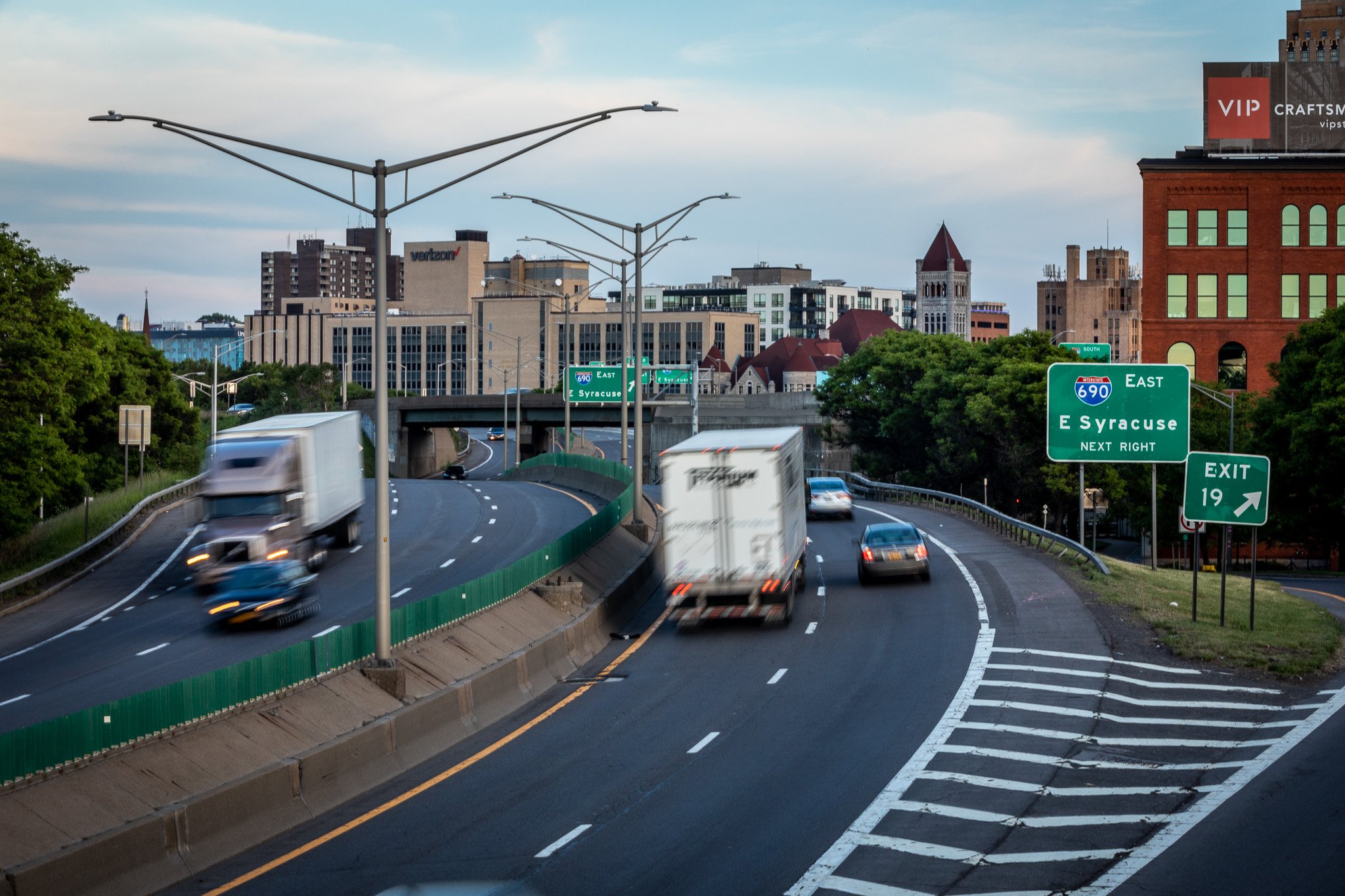Bulldozed and bisected
Highway construction built a legacy of inequality
Will their removal heal historic wounds?
Imagery for NBC NewsWords by Suzanne Gamboa, Phil McCausland, Josh Lederman and Ben Popken
During the largest public works program ever attempted in the United States, Black and Latino communities in cities across the country met the blade of the bulldozer and the crush of the wrecking ball, making room for ribbons of new highway. Whether through blindness or design, the mid-century American interstate highway program demolished homes and bisected communities, driven by the promise of prosperity, faster commutes and jobs.
Of more than 50 interstate highways across the country nearing the end of their life span, NBC News examined three urban neighborhoods that show the range of proposals underway to redress the harms caused by the construction of interstates. In Syracuse, New York, the 15th Ward, home to many Black residents, disappeared under the shadows and smog of Interstate 81. New York state has committed $800 million to the first phase of the highway’s removal beginning next year, to be replaced by a walkable and bikeable “community grid.” But residents are deeply concerned about displacement, gentrification, and the negative impact on other areas.
Now several years past its functional expiration date, the interstate has become a physical border dividing the community along all-too-familiar lines: Mostly Black and poor to the south and west; wealthier and mostly white to the east, where the private Syracuse University sits. As New York state plans to rip the viaduct down and the Biden administration pledges that part of its proposed $20 billion infrastructure plan will go to reconnecting the community, a fierce debate has broken out over unintended consequences, and whether a story of “urban renewal” gone awry is about to be repeated.









